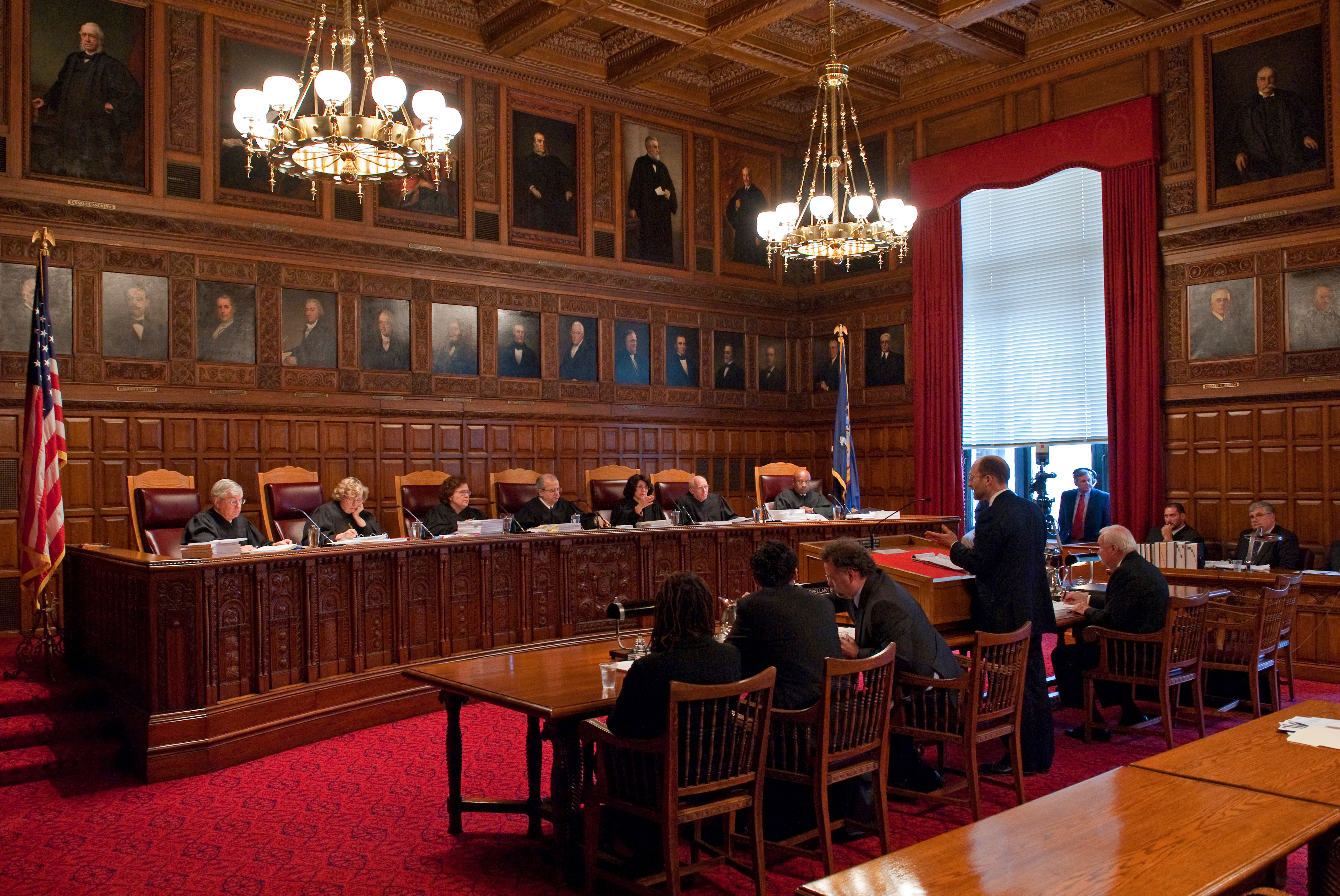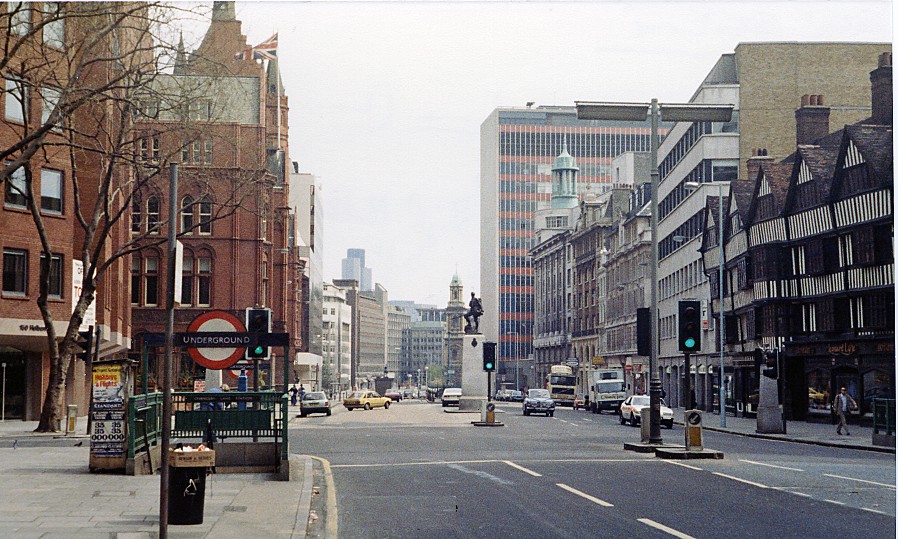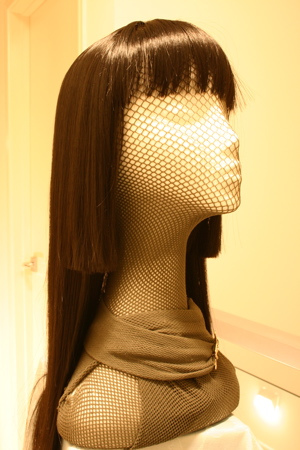|
Barristers In England And Wales
Barristers in England and Wales are one of the two main categories of lawyer in England and Wales, the other being solicitors. Barristers have traditionally had the role of handling cases for representation in court, both defence and prosecution. (The word "lawyer" is a generic one, referring to a person who practises in law, which could also be deemed to include other legal practitioners such as chartered legal executives.) Origin of the profession The work of senior legal professionals in England and Wales is divided between solicitors and barristers. Both are trained in law but serve differing functions in the practice of law. Historically, the superior courts were based in London, the capital city. To dispense justice throughout the country, a judge and court personnel would periodically travel a regional circuit to deal with cases that had arisen there. From this developed a body of lawyers who were on socially familiar terms with the judges, had training and experience i ... [...More Info...] [...Related Items...] OR: [Wikipedia] [Google] [Baidu] |
Lawyer
A lawyer is a person who practices law. The role of a lawyer varies greatly across different legal jurisdictions. A lawyer can be classified as an advocate, attorney, barrister, canon lawyer, civil law notary, counsel, counselor, solicitor, legal executive, or public servant — with each role having different functions and privileges. Working as a lawyer generally involves the practical application of abstract legal theories and knowledge to solve specific problems. Some lawyers also work primarily in advancing the interests of the law and legal profession. Terminology Different legal jurisdictions have different requirements in the determination of who is recognized as being a lawyer. As a result, the meaning of the term "lawyer" may vary from place to place. Some jurisdictions have two types of lawyers, barrister and solicitors, while others fuse the two. A barrister (also known as an advocate or counselor in some jurisdictions) is a lawyer who typically specia ... [...More Info...] [...Related Items...] OR: [Wikipedia] [Google] [Baidu] |
Cab-rank Rule
In English law (and other countries which adopt the rule), the cab-rank rule is the obligation of a barrister to accept any work in a field in which they profess themselves competent to practise, at a court at which they normally appear, and at their usual rates. The rule derives its name from the tradition by which a Hackney carriage driver at the head of a queue of taxicabs is obliged to take the first passenger requesting a ride. The cab rank rule is set out at rC29 of the Bar Standards Board Handbook. It states that if the barrister receives instructions from a professional client and the instructions are appropriate taking into account their experience, seniority and/or field of practice, they must (subject to the exceptions in rC30) accept those instructions irrespective of: # The identity of the client; # The nature of the case to which the instructions relate; # Whether the client is paying privately or is publicly funded; and # Any belief or opinion which you may have form ... [...More Info...] [...Related Items...] OR: [Wikipedia] [Google] [Baidu] |
High Holborn
High Holborn ( ) is a street in Holborn and Farringdon Without, Central London, which forms a part of the A40 route from London to Fishguard. It starts in the west at the eastern end of St Giles High Street and runs past the Kingsway and Southampton Row, becoming Holborn at its eastern junction with Gray's Inn Road. The western stretch as far as Drury Lane, was formerly known as Broad Street. On High Holborn, traffic (including cycles and buses) flows one-way westbound from its junction with Drake Street to its western end, and flows both ways for the remainder. The nearest London Underground stations are Tottenham Court Road, Holborn, and Chancery Lane, all on the Central line which runs beneath High Holborn. Landmarks along High Holborn include the Cittie of Yorke, at no. 22, and the Embassy of Cuba, at no. 167. The street was a "Feature site" for introduction of the Camden bench. High Holborn is the highest point in the City of London. At 22 metres (72 feet) above s ... [...More Info...] [...Related Items...] OR: [Wikipedia] [Google] [Baidu] |
Strand, London
Strand (or the Strand) is a major thoroughfare in the City of Westminster, Central London. It runs just over from Trafalgar Square eastwards to Temple Bar, where the road becomes Fleet Street in the City of London, and is part of the A4, a main road running west from inner London. The road's name comes from the Old English ''strond'', meaning the edge of a river, as it historically ran alongside the north bank of the River Thames. The street was much identified with the British upper classes between the 12th and 17th centuries, with many historically important mansions being built between the Strand and the river. These included Essex House, Arundel House, Somerset House, Savoy Palace, Durham House and Cecil House. The aristocracy moved to the West End during the 17th century, and the Strand became known for its coffee shops, restaurants and taverns. The street was a centre point for theatre and music hall during the 19th century, and several venues remain on the St ... [...More Info...] [...Related Items...] OR: [Wikipedia] [Google] [Baidu] |
Royal Courts Of Justice
The Royal Courts of Justice, commonly called the Law Courts, is a court building in Westminster which houses the High Court and Court of Appeal of England and Wales. The High Court also sits on circuit and in other major cities. Designed by George Edmund Street, who died before it was completed, it is a large grey stone edifice in the Victorian Gothic Revival style built in the 1870s and opened by Queen Victoria in 1882. It is one of the largest courts in Europe. It is a Grade I listed building. It is located on Strand within the City of Westminster, near the border with the City of London ( Temple Bar). It is surrounded by the four Inns of Court, St Clement Danes church, The Australian High Commission, King's College London and the London School of Economics. The nearest London Underground stations are Chancery Lane and Temple. The Central Criminal Court, widely known as the Old Bailey after its street, is about to the east—a Crown Court centre with no direct connection ... [...More Info...] [...Related Items...] OR: [Wikipedia] [Google] [Baidu] |
Inns Of Court
The Inns of Court in London are the professional associations for barristers in England and Wales. There are four Inns of Court – Gray's Inn, Lincoln's Inn, Inner Temple and Middle Temple. All barristers must belong to one of them. They have supervisory and disciplinary functions over their members. The Inns also provide libraries, dining facilities and professional accommodation. Each also has a church or chapel attached to it and is a self-contained precinct where barristers traditionally train and practise, although growth in the legal profession, together with a desire to practise from more modern accommodations and buildings with lower rents, caused many barristers' chambers to move outside the precincts of the Inns of Court in the late 20th century. History During the 12th and early 13th centuries, law was taught in the City of London, primarily by the clergy. But a papal bull in 1218 prohibited the clergy from practising in the secular courts (where the English common ... [...More Info...] [...Related Items...] OR: [Wikipedia] [Google] [Baidu] |
General Council Of The Bar
The General Council of the Bar, commonly known as the Bar Council, is the representative body for barristers in England and Wales. Established in 1894, the Bar Council is the 'approved regulator' of barristers, but discharges its regulatory function to the independent Bar Standards Board. As the lead representative body for barristers in England and Wales, the Bar Council’s work is devoted to ensuring the Bar’s voice is heard, efficiently and effectively, and with the interests of the Bar (and the public interest) as its focus. History The General Council of the Bar was created in 1894 to deal with breaches of a barrister's professional etiquette, something that had previously been handled by the judiciary. Along with the Inns of Court it formed the Senate of the Inns of Court and the Bar in 1974, a union that was broken up on 1 January 1987 following a report by Lord Rawlinson. The Courts and Legal Services Act 1990 designated the Bar Council as the professional body for ba ... [...More Info...] [...Related Items...] OR: [Wikipedia] [Google] [Baidu] |
Bar Standards Board
The Bar Standards Board regulates barristers in England and Wales for the public interest. It is responsible for: * Setting standards of conduct for barristers and authorising barristers to practise; * Monitoring the service provided by barristers to assure quality; * Setting the education and training requirements for becoming a barrister as well as setting continuing training requirements to ensure that barristers’ skills are maintained throughout their careers; and * Handling complaints against barristers and taking enforcement or other action where appropriate The BSB's functions were originally carried out by the General Council of the Bar, the barristers' representative body, until 2006 when the Bar Council created the BSB as an independent regulator. The Legal Services Board has once - in 2013 - questioned the independence of the BSB from the Bar Council. The BSB's governing board meets monthly at its headquarters in High Holborn, London, and holds public and private s ... [...More Info...] [...Related Items...] OR: [Wikipedia] [Google] [Baidu] |
Gray's Inn
The Honourable Society of Gray's Inn, commonly known as Gray's Inn, is one of the four Inns of Court (professional associations for barristers and judges) in London. To be called to the bar in order to practise as a barrister in England and Wales, an individual must belong to one of these inns. Located at the intersection of High Holborn and Gray's Inn Road in Central London, the Inn is a professional body and provides office and some residential accommodation for barristers. It is ruled by a governing council called "Pension," made up of the Masters of the Bench (or "benchers,") and led by the Treasurer, who is elected to serve a one-year term. The Inn is known for its gardens (the “Walks,”) which have existed since at least 1597. Gray's Inn does not claim a specific foundation date; none of the Inns of Court claims to be any older than the others. Law clerks and their apprentices have been established on the present site since at latest 1370, with records dating from 1381 ... [...More Info...] [...Related Items...] OR: [Wikipedia] [Google] [Baidu] |
Gown
A gown, from the Saxon word, ''gunna'', is a usually loose outer garment from knee-to-full-length worn by men and women in Europe from the Early Middle Ages to the 17th century, and continuing today in certain professions; later, the term ''gown'' was applied to any full-length woman's garment consisting of a bodice and an attached skirt. A long, loosely fitted gown called a Banyan was worn by men in the 18th century as an informal coat. The gowns worn today by academics, judges, and some clergy derive directly from the everyday garments worn by their medieval predecessors, formalized into a uniform in the course of the 16th and 17th centuries. Terminology A modern-day gown refers to several types of garments. It can refer to a woman's dress, especially a formal or fancy dress. It may also refer to a nightgown or a dressing gown. In academia, and other traditional areas such as the legal world, gowns are also worn on various formal or ceremonial occasions. History The ''g ... [...More Info...] [...Related Items...] OR: [Wikipedia] [Google] [Baidu] |
Wig (hair)
A wig is a head or hair accessory made from human hair, animal hair, or synthetic fiber. The word wig is short for periwig, which makes its earliest known appearance in the English language in William Shakespeare's ''The Two Gentlemen of Verona''. Some people wear wigs to disguise baldness; a wig may be used as a less intrusive and less expensive alternative to medical therapies for restoring hair or for a religious reason. History Ancient and medieval use In Egyptian society men and women commonly had clean shaven or close cropped hair and often wore wigs. The ancient Egyptians created the wig to shield shaved, hairless heads from the sun. They also wore the wigs on top of their hair using beeswax and resin to keep the wigs in place. Wealthy Egyptians would wear elaborate wigs and scented head cones of animal fat on top of their wigs. Other ancient cultures, including the Assyrians, Phoenicians, Jews in ancient Israel, Greeks and Romans, also used wigs as an everyday fashion. ... [...More Info...] [...Related Items...] OR: [Wikipedia] [Google] [Baidu] |
Pupillage
A pupillage, in England and Wales, Northern Ireland, Kenya, Malaysia, Pakistan and Hong Kong, is the final, vocational stage of training for those wishing to become practising barristers. Pupillage is similar to an apprenticeship, during which bar graduates build on what they have learnt during the Bar Professional Training Course or equivalent by combining it with practical work experience in a set of barristers' chambers or pupillage training organisation. England and Wales A pupillage is the final stage of training to be a barrister and usually lasts one year; in England and Wales the period is made up of two six-month periods (known as "sixes"). The first of these is the non-practising six, during which pupils shadow their pupil supervisor, and the second will be a practising six, when pupils can undertake to supply legal services and exercise rights of audience. At the end of the first six months, a pupil needs to have the pupil supervisor sign a certificate confirming satis ... [...More Info...] [...Related Items...] OR: [Wikipedia] [Google] [Baidu] |


.jpg)
.jpg)

